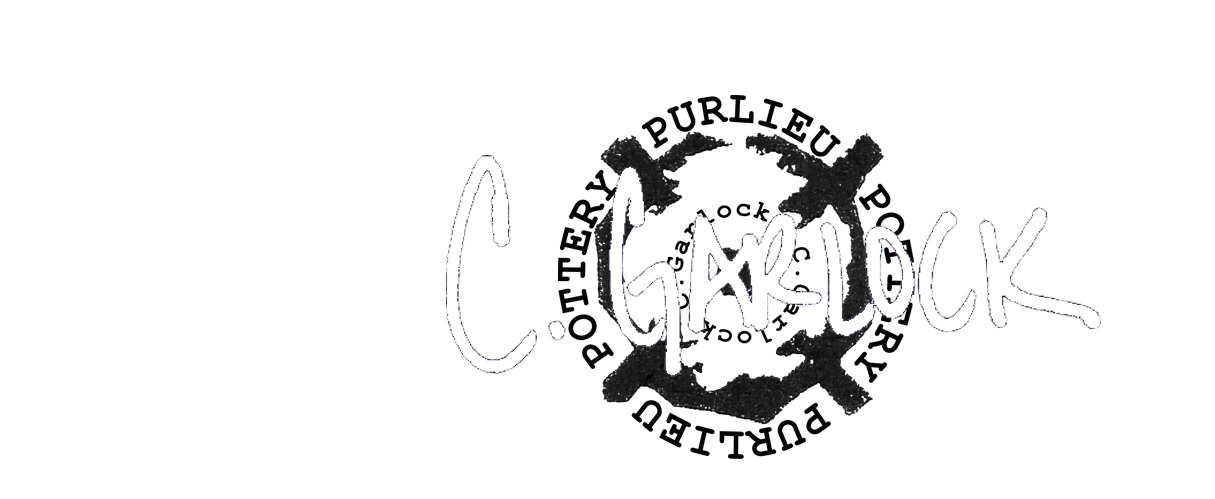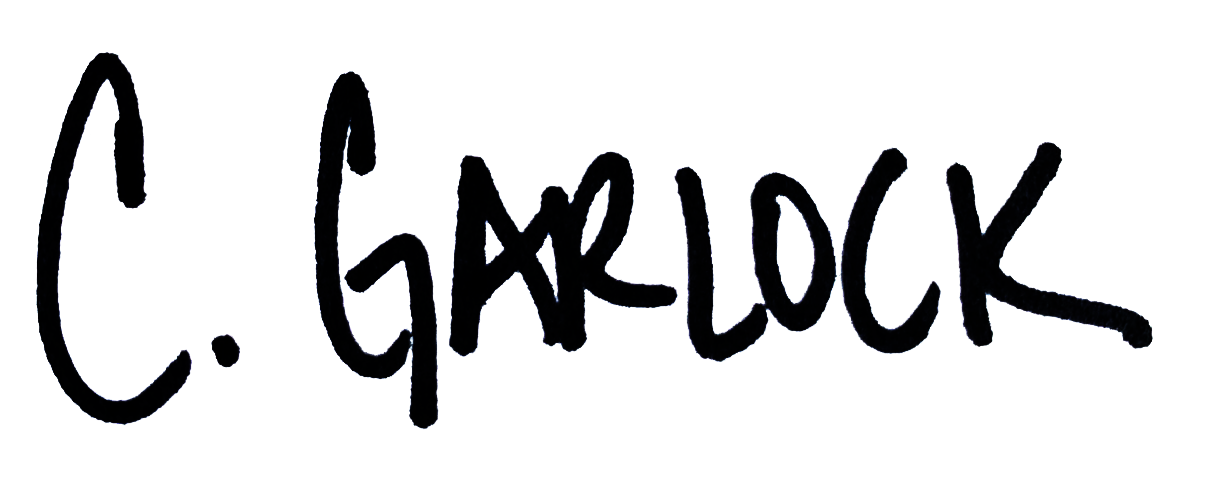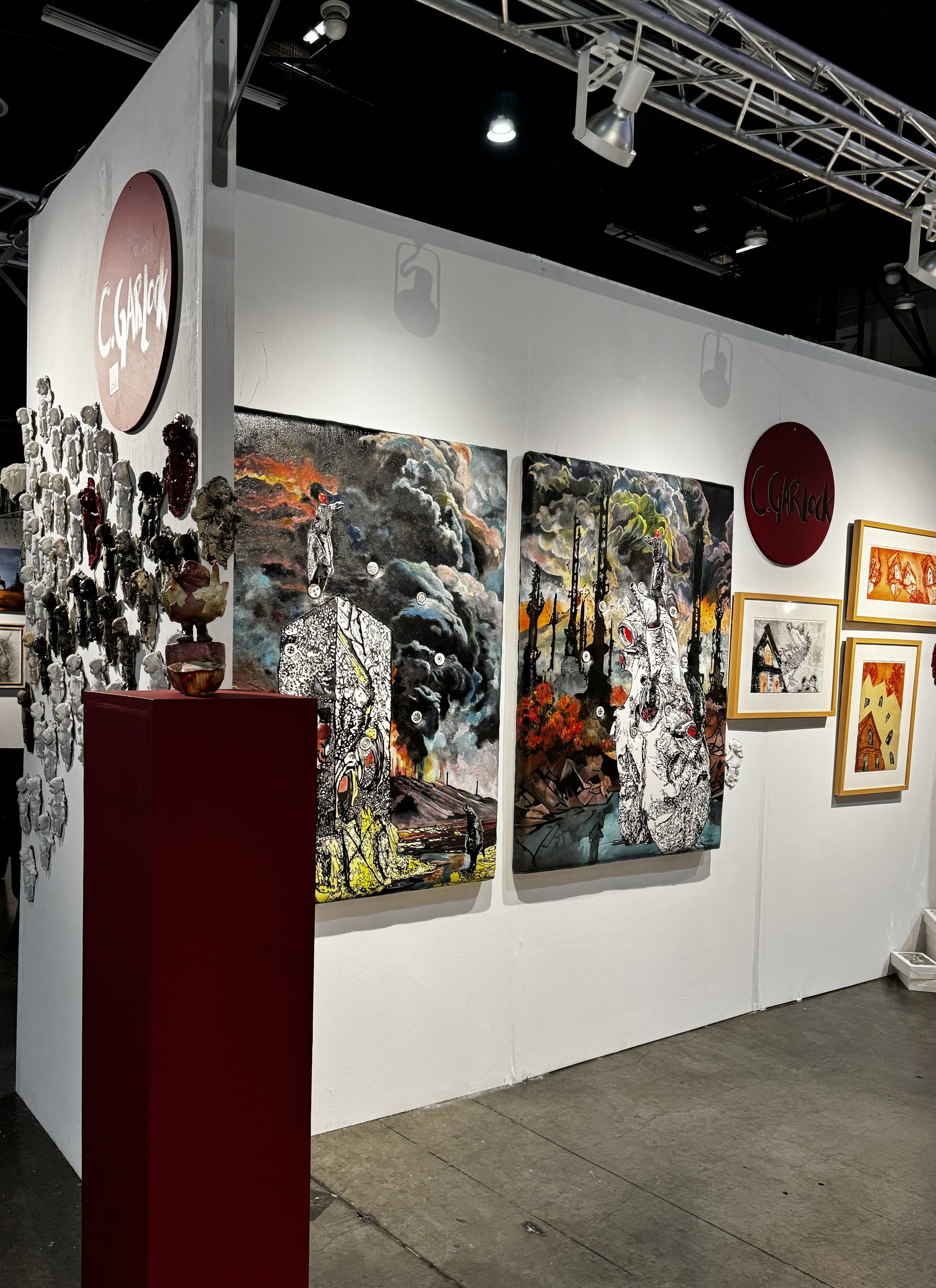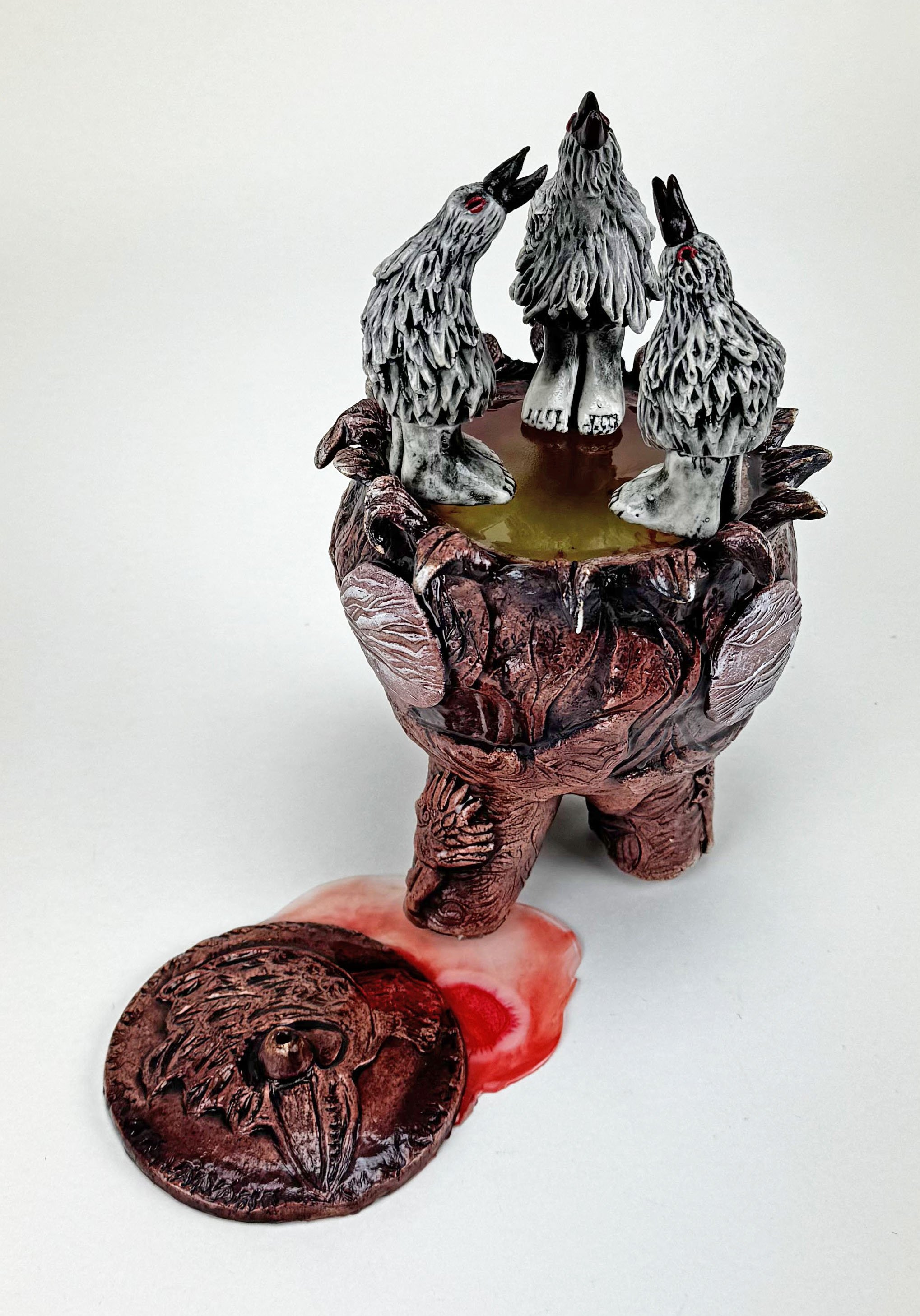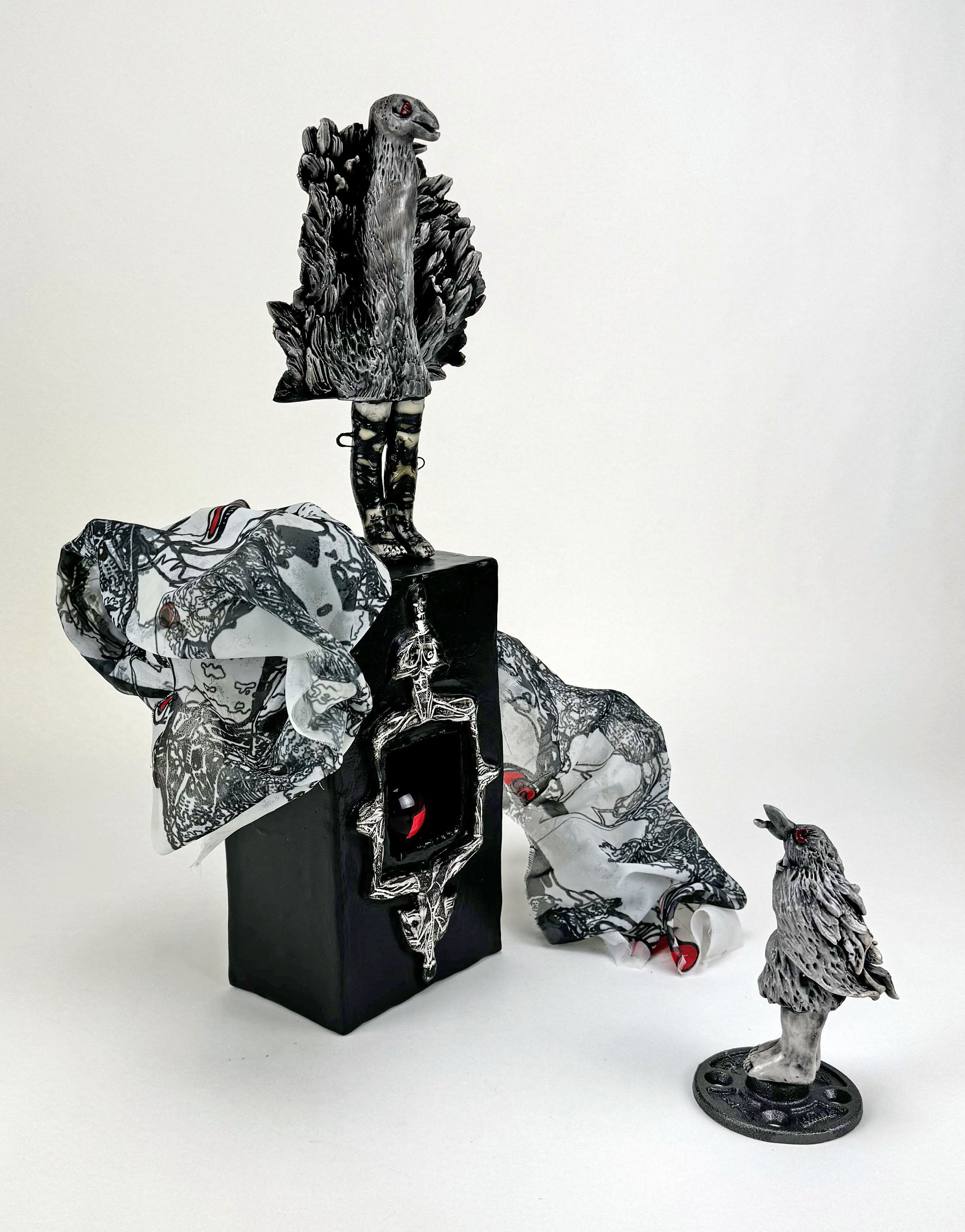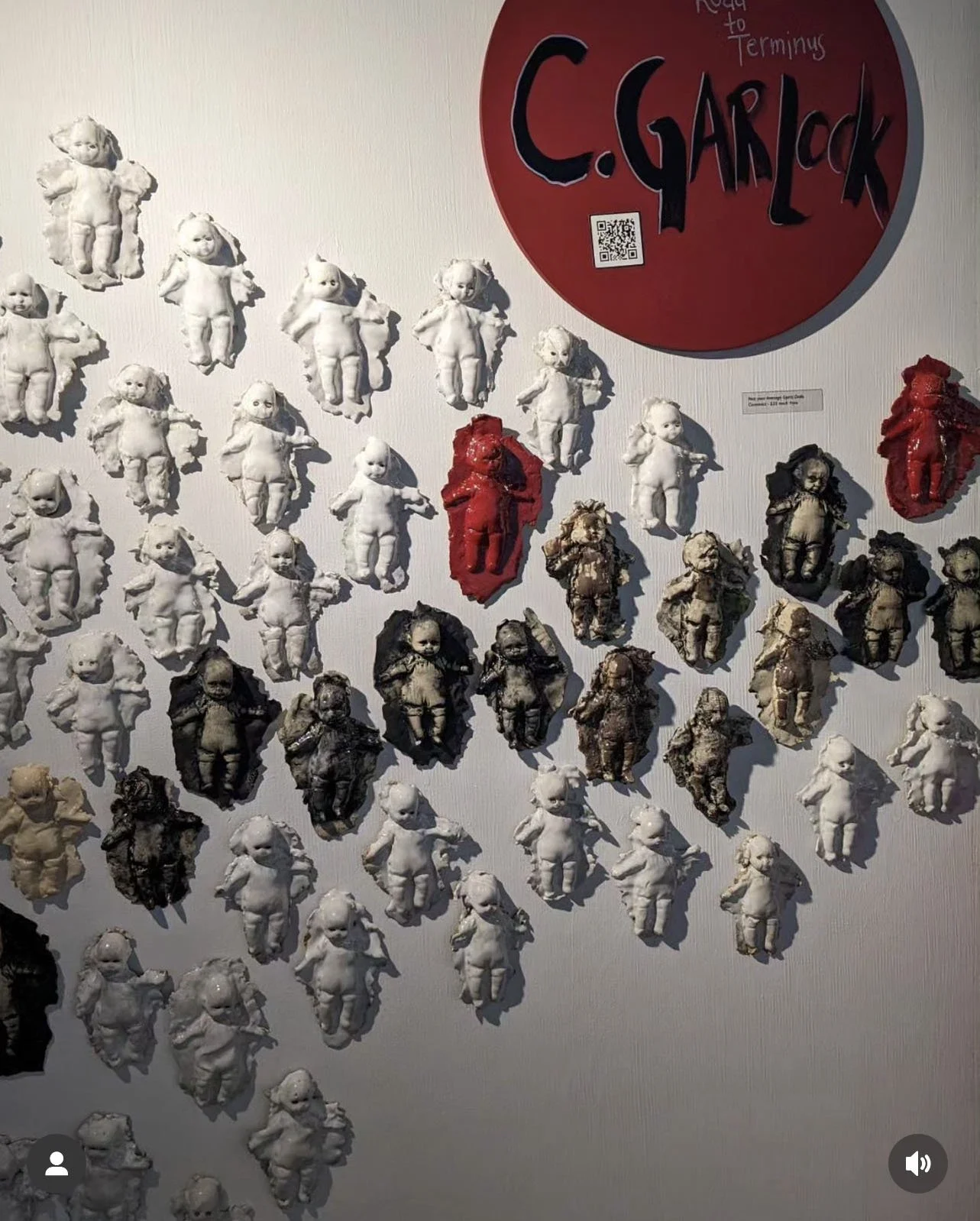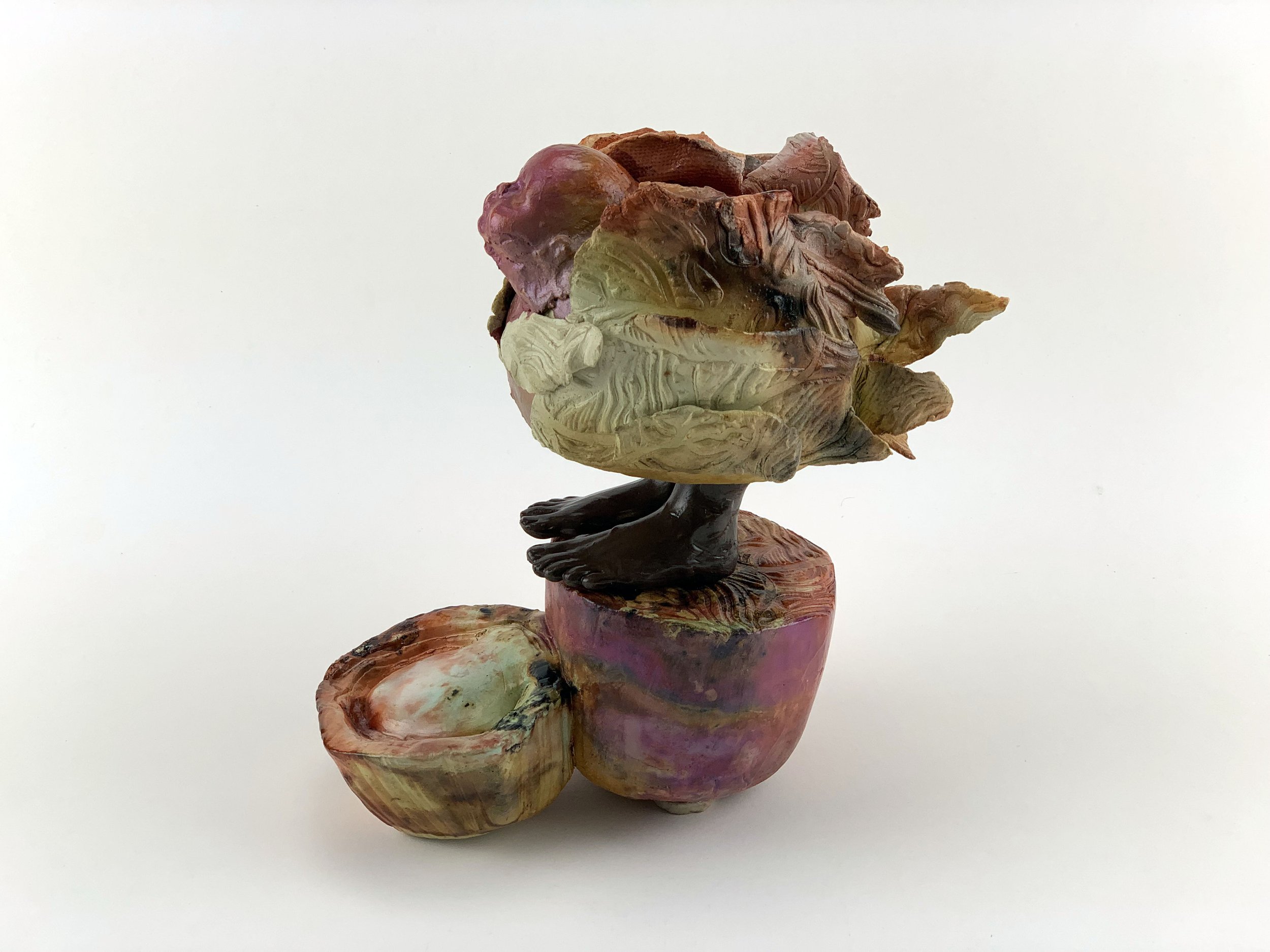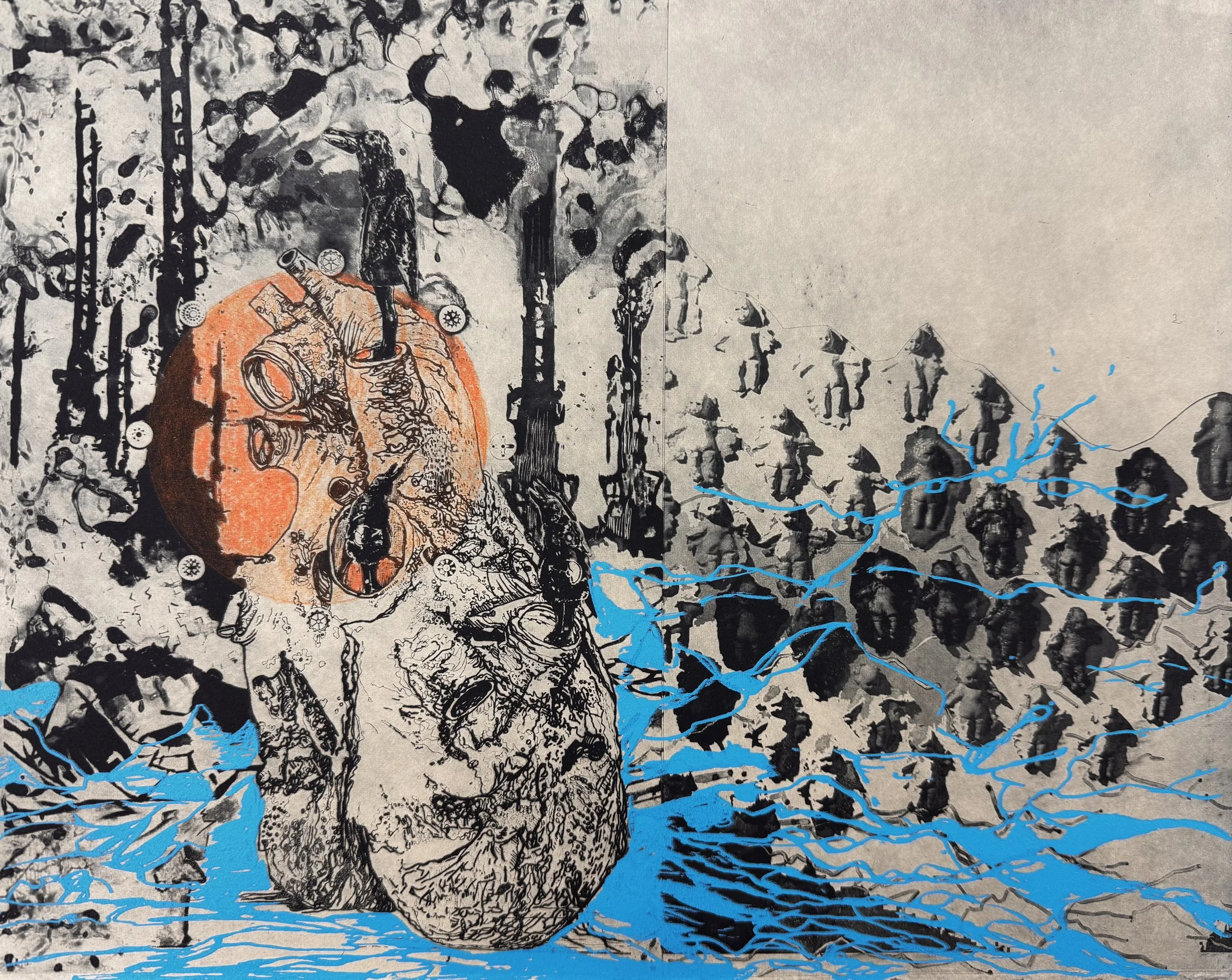The Road to Terminus
When we first think of the word terminus, we think of a railroad, correct? At least that is what I thought when I first encountered the term. Actually, if truth be told, my first exposure to the word came from watching “The Walking Dead” in 2014. The main characters in the show had been separated and were all traveling on different paths. We follow along, watching them in their struggle to find each other, each one discovering a sign that points to Terminus, “Sanctuary for all. Community for all. Those who arrive survive.” It was meant to be a sanctuary in an apocalyptic world, yet we discover together that it isn’t.
Road To Terminus booth at Reno Tahoe International Art Show 2024
Terminus, Collagraph and Photopolymer Etching, 2017
So, what is terminus? In 2014, I equated it to the end of a journey, but like the characters in “The Walking Dead” the journey is never at an end. There are arrivals and departures in an endless loop. In 2017, I was reminded of the term again when I was invited to participate in the themed print exchange for Southern Graphics Printmaking International Conference held in Atlanta, Georgia. The print I created, titled Terminus, was the origin piece for this series of work. Terminus: A man curled up in the yolk of an egg, his separated silhouette and topographical map of his body floating above the cracked playa. The sewn triangle: a representation of the railroad track that may seem to lead to somewhere, but doesn’t. The stitching represents our ability to mend ourselves despite the adversities we endure.
Terminus, historically refers to the marking of a boundary. In the Roman Empire, all boundary stones had a minor god, Terminus associated with them. This god protected the boundaries between properties. In my own reference to Terminus, I created many prints between 2017 and 2024. These prints were all collagraph and photopolymer etchings that were metaphors for boundaries, chaos, traveling lines leading to something (or nothing at all.) After our world-wide scare in 2020, the prints became a metaphor for the ending. But of course, where there is an end, there is always a beginning, right?
The Sculpture that I created in 2023 titled Terminus and Telos tells a story of the end of days. Telos is an interesting word. I actually stumbled upon it when I was researching Terminus and societal references to decay. During my internet wanderings, I came across Telos as a word that describes the end of philosophy. In the bible, ROM 10:4 Telos references the loss of moral purpose. Of course, I think of Mad Max. I also think about higher education and maybe just education in the United States as a whole. Have we lost what is so important to the understanding of humanity? Have we lost the ability to challenge and grow from adversity. The two crows sit atop a dystopian structure – one a teacher, the other, her student. The red marbles are knowledge of the past that is yet unattainable to the student.
Practice, Memory and Song continues the story of "The Road to Terminus" with the little birds as the three muses...or for me three young students learning to live in a brave new world.
Just as birds often symbolize freedom and transcendence, the sculptures in the “Mala” series embodies the idea of transition and transformation. The sculptures serve as a powerful reminder that every ending is a new beginning, and that true freedom lies in embracing change and transformation.
The word "Mala" has various meanings in different languages. In Spanish, "mala" means bad or evil. In Sanskrit, "mala" can refer to a garland or a rosary used for meditation or prayer. It can also mean a series or collection of something.
Mala-SANA signifies a juxtaposition between negative and positive qualities, suggesting a juxtaposition between a harmful state and a healthy one, thus evoking emotions of redemption, healing, and acceptance of adversity.
Within the Road to Terminus theme, the concept of an impending warning related to the word "Mala" evokes a sense of foreboding or imminent change. This warning serves as a reminder of the need to be prepared for what lies ahead, to be mindful of potential endings and new beginnings that could arise.
Trogon Territory was inspired by a visit to the surrounding areas of Mexico City and researching the bird motifs in the Olmec writing system. It was interesting to learn that "Trogon" comes from the Greek word for nibbling. Abstracting the symbolism and meanings behind these bird motifs allowed me to draw inspiration from my own memory, considering how the landscapes, wildlife, and cultural heritages change through the lens of those that are still here.
The "Baby Dolls" series portrays a tension between our impulse to procreate and concerns about the sustainability of life. In June 2022, the U.S. Supreme Court neglected its responsibility to uphold essential rights by reversing Roe v. Wade, asserting that there is no constitutional entitlement to abortion. The artwork below, Pain/Pleasure Syndrome emerged amidst the battle for reproductive rights at the state level.
So, what is terminus? I equate it to the end of a journey, but like the characters in “The Walking Dead” the journey is never at an end. There are arrivals and departures in an endless loop.
Once there were water babies. Photopolymer Intaglio, screenprint, colored pencil drawing on Rives BFK Tan paper. 11”x14”
“Once there were water babies.”
In a distant future where civilization has crumbled under the weight of environmental devastation, a desolate landscape emerges. This parched land, once vibrant with life, is now a barren wasteland, marked by cracked earth and remnants of plastic, steel and concrete. Amidst this desolation, the mutated raven people, known as the Corvidae, roam in search of lost humanity—both in the physical and spiritual sense.
The Corvidae, their bodies twisted and elongated from generations of adaptation to the harsh environment, mutated birds with human legs, temporarily shelter along the road to Terminus, a mythological resting space that never really appears. With feathers that shimmer in shades of charcoal and obsidian, they possess an uncanny intelligence and an ability to communicate through a complex language of caws and gestures. Their eyes, sharp and glimmering like shards of red glass, reflect desolation.
Along this road, a petrified blue whale heart is used for a shelter. These whales, once the largest animal on the planet, have long gone with the vanishing oceans. Their hearts weighing as much as 400 pounds, the size of a small car.
As scavengers, the Corvidae traverse the ruins of once-thriving cities, picking through the debris of human existence and in their search for artifacts, they seek to piece together the story of humanity’s downfall. Each item they find is a treasure, holding fragments of memories long forgotten. The Corvidae believe that by uncovering these remnants, they can reclaim the lost essence of humanity and restore balance to their world.
Yet, their quest is not without peril. The parched land is fraught with dangers, from toxic storms that sweep across the horizon to rival factions of mutated creatures that fiercely guard their territories. The Corvidae must rely on their cunning and teamwork to navigate these challenges, often forming alliances with other mutated beings in a delicate dance of survival. As they scavenge, they share tales of the past, weaving a rich tapestry of mythology that binds them together in their shared experience.
Finding a grave of plastic and ceramic spirit dolls, a group of Corvidae begin to unravel the mythology of water babies, piecing together stories gathered from collecting other remnants. The Island of the Dolls, located in the canals of Xochimilco, Mexico, is steeped in a haunting legend. According to the myth, a man named Julián Santana Barrera discovered a drowned girl and began hanging dolls from trees to appease her spirit and prevent further misfortune. Over time, the island became a macabre collection of dolls, believed to come alive at night. The water babies can be heard crying near edges of toxic lakes, luring creatures to their poisonous death below turquoise waters.
The Corvidae believe the road to Terminus will end and the earth will heal. They hold onto the hope that their scavenging efforts will one day lead to a rebirth, where the lessons of the past will inform a new, harmonious existence. This belief fuels their relentless pursuit, as they strive not only to survive but to understand the essence of what it means to be human. In this imagined realm, the Corvidae embody the duality of destruction and rebirth, serving as guardians of forgotten wisdom. Their journey through parched land is a testament to the enduring spirit of life, reminding us that even in the face of devastation, the quest for understanding and connection can lead to unexpected paths. Through their scavenging, they not only seek to reclaim lost humanity but also to forge a future where the scars of the past can be transformed into a foundation of something new.
NOTE: Corvidae is the scientific family name for a group of birds commonly known as corvids, which includes species such as crows, ravens, magpies, and jays. These birds are known for their intelligence, problem-solving abilities, and complex social structures.
